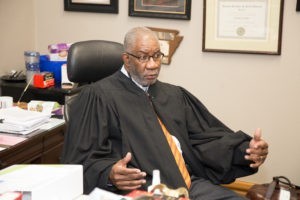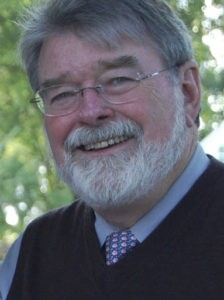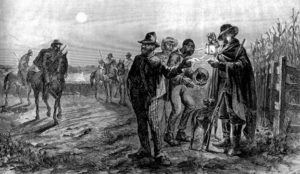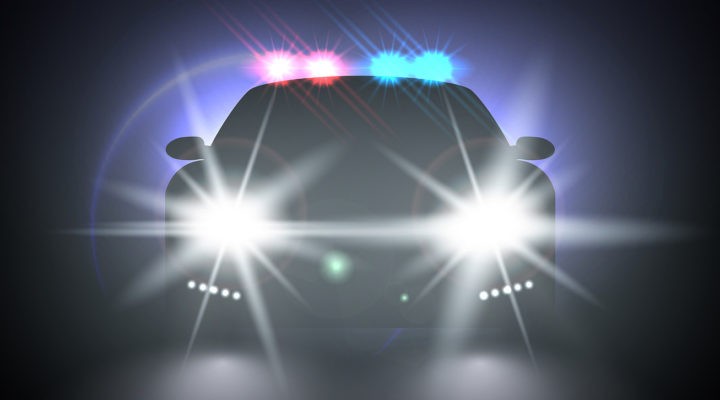A new study from the University of California offers concrete data on the meaning of “systemic racism” in policing — data not surprising to two Baptists with front-row seats to issues of policing and criminal justice.
The USC report analyzed police data across Los Angeles County from 2011 to 2018, focusing especially on interactions between police officers and members of the community. The researchers found that:
- Blacks were arrested three times as often as whites and Latinos.
- During the study period, civilian-initiated contact with police increased steadily but police-initiated contact decreased drastically in most of the years studied.
- Stop rates decreased on average, but increased significantly after 2015 in certain neighborhoods, such as South Los Angeles.
- Calls to 911 by community members increased steadily over the study’s seven-year period.

Judge Wendell Griffen
“The big takeaway is that you have communities of color that have a higher rate of stops and arrests by police, yet — and this would seem counterintuitive — rely on police more,” said Wendell Griffen, a Baptist pastor and circuit court judge in Little Rock, the most racially diverse jurisdiction in Arkansas.
Pressure for transparency
As part of the study process, findings about interactions between police and civilians were shared with various groups to try to understand how law enforcement and members of the community think about public safety. This effort marks a departure from the typically close-lipped culture that permeates law enforcement.
“Police departments are under pressure to be more transparent,” said Patrick Anderson, a professor of criminal justice in Florida and editor of Christian Ethics Today. “They’ll let you look at the big picture, but when you investigate more deeply, the blue wall closes in pretty quickly against any in-depth analysis of individual actions.”
The USC study pulls back the curtain on these questions and documents more than is typically reported. The findings raise questions about the prevalence of systemic racism in police practices.
“Either communities of color are disproportionality more unlawful, or there are factors that show that communities of color are disproportionately more heavily policed than white communities.”
“Either communities of color are disproportionality more unlawful, or there are factors that show that communities of color are disproportionately more heavily policed than white communities,” Griffen said.
Griffen, who is Black, believes the issue is a self-fulfilling prophecy.
“If you are stopped and arrested at higher rates, it’s easy to figure out how the high-crime-area label would be affixed to you,” Griffen said. Additionally, because of the uneasy relationship between police and people of color, Blacks are often left with no good options when it comes to interacting with police, he added.
“A group of Black men who are gathered are often viewed as ‘up to something.’ And if the group begins to disburse when they see the police, they are seen as guilty of doing something.”
Griffen and Anderson both believe the USC study highlights the systemic racism and implicit bias that have permeated the police profession for centuries. These issues have risen to the public consciousness in recent years, driven in part by advances in technology and the prevalence of social media.

Patrick Anderson
“We’re more focused on issues of policing and systemic racism now,” Anderson said. “It’s in front of our eyes with cell phones and police cameras. When you see an officer with his knee on the neck of someone calling for his mother, you can’t deny it. This is someone’s mother or coworker. For generations, police have just been willing to lie — to have their own narrative of what happened.” In that scenario, the police narrative is more likely to be accepted.
Historical basis for concern
To understand the underlying systemic issues, it’s helpful to understand the history of policing in America.
“During slavery, the police were de facto slave catchers,” Griffen explained. “After slavery, a Black person could be stopped by any police person, and there were laws designed to allow the police to make an arrest and re-enslave the person who was nominally free, because jail and bail could be used as a way to put that person back in a plantation work setting.”
 The end of slavery did little to change the relationship between the police and people of color.
The end of slavery did little to change the relationship between the police and people of color.
“When the organized labor movement came about, one of the standard practices of business owners was to try to use the police to break up the labor movement,” Griffen said. “That’s just a continuation of using the police to catch slaves.”
Today, police work often is romanticized in the United States, and victims of police misconduct are left with little recourse due to systemic challenges at various points in the criminal justice system, Anderson said.
“You’ve got this ‘blue uniform syndrome,’” he explained. “Politicians, jurors, prosecutors and others look at the people who wear the blue uniform in romantic, heroic terms. But not all police officers are the same. They have enormous discretion to arrest or not arrest, search or don’t search.”
Anderson points out that while police misconduct is a major issue, a small number of “bad actors” within the police force are responsible for most of the problems.
“When the same officers are involved repeatedly in acts of brutality, they do so with impunity and they’re not dealt with in the criminal justice system.”
“When the same officers are involved repeatedly in acts of brutality, they do so with impunity and they’re not dealt with in the criminal justice system,” Anderson said, adding that prosecutors and grand juries rarely indict police for misconduct, and some states have laws that allow police to shoot to kill if they feel their lives are in danger.
“After the fact, everyone is going to say they felt like they were at risk,” he said. “And that sends a message to the community that you can’t trust the police.”
A surprising bit of data
That communities of color don’t trust the police makes another aspect of the study’s findings somewhat surprising: Persons of color make more 911 calls for assistance than whites do.
To explain this finding, Griffen points to the inherent challenges that communities of color face, including a lack of affordable housing, good jobs, and access to health care.
“There is systemic deprivation — fitness, parks, environment, food,” he said. “The communities are less safe, and when you add the police presence on to it, where you have more people tightly congested, in a less environmentally friendly habitat, then you have a social pressure cooker. You have not global warming, you have communal warming.”
It’s important to take these disadvantages into account when analyzing racial disparities in the criminal justice system, Griffen said. “When we teach criminology, we don’t spend enough time thinking about (the disadvantages that people of color face). And I find little evidence that this has been factored into the way law enforcement agencies do their work.”
Proposed police reforms
Anderson points out that the systemic issues in policing are well-known, if not universally acknowledged. What’s less clear is how to address them.
One contemporary solution is a concept called “defunding the police” — taking some money from police budgets and redirecting those funds and manpower toward social services believed to be more effective and appropriate than a military-style approach.
“It’s interesting that people criticize defunding the police,” Griffen said. “If you have police doing stuff that doesn’t involve helping but involves disproportionate harm, isn’t the best way to minimize the harm to take away resources that are causing harm and reinvest them in ways that promote healing?”
Anderson agreed.
“We need to redirect a lot of the money that’s gone into the police,” he said. “We’re good about buying guns and bullets and bulletproof vests and tanks and military-style hardware, but that’s not where the criminal justice issues really reside.”
“We’re good about buying guns and bullets and bulletproof vests and tanks and military-style hardware, but that’s not where the criminal justice issues really reside.”
Instead, Anderson said, the root issues often require more focus on social work than on crime control. “When we put a military face on the control of crime, then we’re using the wrong model.”
Although police training is an area that gets a lot of attention in reform discussions, Anderson points to a step before training as essential too: America needs to change the way police are recruited and selected.
“You’re going to give them a gun and other weapons and tremendous power,” Anderson said. “The wrong person trained is still the wrong person. We need to screen people much more closely to identify the racism and the love of power and force.”
Anderson also suggested engaging community leaders earlier and more often in decisions on who to hire as police officers.
“Police need to turn to the community for input about decisions on who is going to be a police officer and how they should be trained,” he proposed. “In the predominantly Black community we need churches and pastors and others to interview potential police officers and make a judgment — to have some say in who is going to be policing their communities.”
But the need for community involvement doesn’t stop with hiring decisions, Anderson added.
“We need to have civilians involved in police misconduct investigations. The grand jury is not an adequate check on misconduct. A proposal like that would face enormous pushback from police agencies. But policing is too important to just have a segment of the population make the life-and-death decisions that police work requires.”


